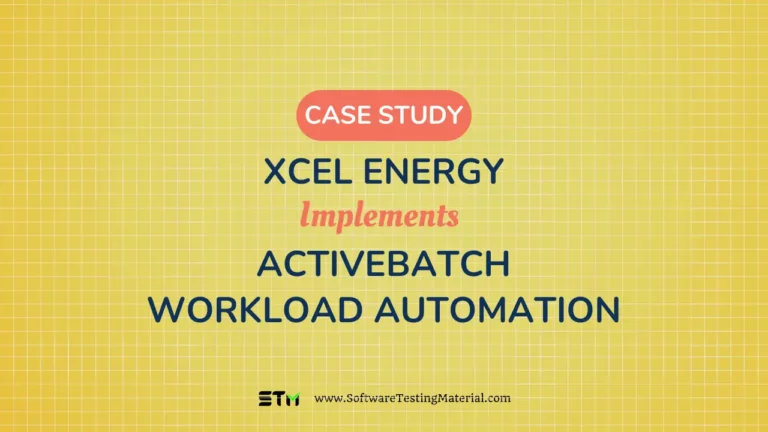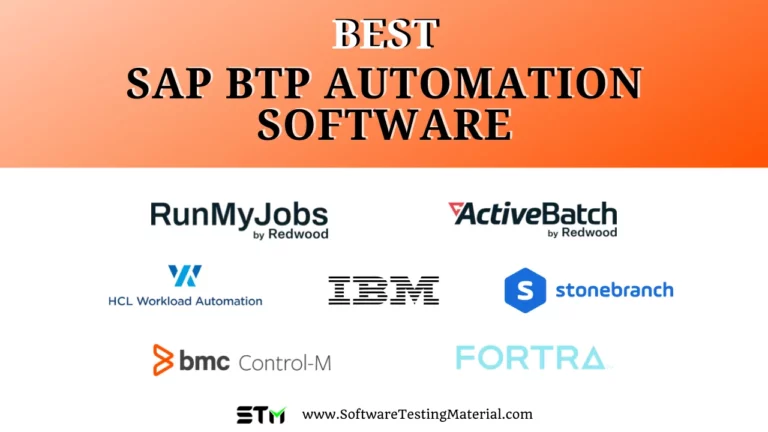Breaking Free from Broadcom’s Price Hikes: Finding Cost-Effective Workload Automation Alternatives
Enterprise IT leaders are facing a perfect storm in the workload automation space. Broadcom’s aggressive acquisition strategy—particularly its purchase of VMware and CA Technologies—has transformed formerly predictable IT investments into volatile financial liabilities. The pricing changes have left CIOs and IT directors struggling to balance their budgets while keeping important automation systems running.
This is not just about regular price changes from vendors. Organizations across industries are facing unprecedented price hikes, fundamental shifts in licensing models, and a change in business philosophy that prioritizes short-term revenue over fostering long-term customer relationships. The impact extends beyond immediate budget concerns to affect strategic IT planning, scalability, and ultimately, business competitiveness.
For businesses facing this pricing challenge, the real question is not whether to look for other options, but how to find and switch to solutions that offer both strong technical features and stable costs.
Organizations facing challenges with Broadcom now have reason to breathe easier—there are excellent alternatives available in the market. Solutions like AutoSys Alternatives, Automic Automation Alternatives and Dollar Universe Alternatives provide greater flexibility and more customer-friendly pricing models. These options are well worth considering as competitive and practical alternatives.
Broadcom’s Pricing Revolution: The Numbers
Broadcom’s price increases have surprised even seasoned IT procurement specialists accustomed to vendor negotiations. These changes are not small adjustments but major shifts aimed at significantly raising costs for customers.
Documented Price Increases Across Product Lines
The statistics tell a story that’s difficult to dismiss:
- AT&T alleged that Broadcom proposed a staggering 1,050% price increase for VMware services, a claim serious enough to trigger legal action between the companies
- Multiple Reddit threads document increases ranging from 175% to over 600% for enterprise customers
- A corporate customer reported feeling “held for ransom” after facing a 175% increase, noting the prohibitive cost and complexity of migrating to alternative solutions
These aren’t isolated incidents but reflect a systematic approach to maximizing revenue from acquired software assets.
New Licensing Structures and Financial Implications
Beyond simple percentage increases, Broadcom has fundamentally altered how its products are licensed and sold:
- Starting April 10, 2025, the minimum number of cores for any new VMware order will increase from 16 to 72 cores per order line—effectively forcing smaller environments to pay for capacity they don’t need
- A LinkedIn newsletter by Mark Thaver explains that after Broadcom bought VMware in 2023, it stopped offering permanent (perpetual) licenses and moved everything to a subscription model. This means customers now have to pay regularly instead of owning the software outright, which could cost more over time. Existing agreements will still be honored until they expire, but after that, switching to subscriptions is required. The article advises businesses to review their current deals, plan ahead, and consider other options if the new prices don’t work for them.
- European trade groups have formally criticized Broadcom’s licensing adjustments as “unjustifiable,” noting that product bundling forces customers to purchase unwanted components
Customer Concerns About Vendor Lock-In
The psychological impact of these changes goes beyond budgetary stress. IT leaders express feeling trapped in a predatory relationship:
- A viral Reddit thread titled “VMware turns its back on small businesses: New licensing policies trigger industry backlash” captures the sentiment of abandonment felt by long-time customers
- Another thread, “Currently on a license renewal call with Broadcom and it’s going pretty much exactly as you’d expect” reflects the resigned frustration of customers entering negotiations they feel powerless to influence
- Also, if customers renew late, they have to pay 20% extra, which adds more financial stress. Many users think these rules only help big companies, so they are looking at other virtualization options because of the high costs and lack of flexibility.
- “VMware Licensing Nightmare” and “Even more Broadcom fun, part [I lost count long ago]” underscore the ongoing nature of these challenges
As one Reddit user asked, “Is Broadcom forcing you to go to one license level only?“—highlighting how licensing simplification often translates to forcing customers into more expensive tiers regardless of their actual needs.
Beyond Sticker Price: The True Cost of Ownership
The direct license cost increases represent only part of the financial impact. Organizations must consider the total cost of ownership when evaluating their current Broadcom relationship against potential alternatives.
Hidden Costs in the Broadcom Ecosystem
Several factors contribute to increased total costs beyond the license itself:
- Support challenges leading to increased internal labor costs: As documented in customer forums, diminished support quality means more internal staff time dedicated to problem resolution
- Security patching and remediation expenses: The operational burden of managing frequent critical vulnerabilities requires dedicated resources
- Productivity losses during outages or support delays: When automation systems fail and support is unresponsive, the business impact extends across dependent operations
- Training and retention challenges: Staff frustration with problematic vendor relationships can accelerate turnover of valuable IT talent
How Licensing Changes Affect Scalability and Growth Plans
The new minimum licensing requirements create particular challenges for growth planning:
- Organizations must now purchase capacity in larger increments, creating “step function” cost increases rather than gradual scaling
- The inability to right-size licenses means organizations consistently overpay for capacity
- Budgetary uncertainty makes long-term planning more difficult, potentially delaying strategic initiatives
Budget Reallocation Needs When Facing Unexpected Price Increases
When automation costs increase unexpectedly, the budget must come from somewhere:
- Innovation initiatives often face cuts to maintain operational systems
- Staffing plans may be adjusted, reducing resources for other priorities
- Digital transformation projects face delays when infrastructure costs consume disproportionate resources
The impact of these price increases is further magnified by the operational costs associated with platform instability. IT departments report allocating significant additional resources to managing agent crashes and unexpected bugs introduced during updates—essentially paying more for a less reliable solution. This combination of rising prices and declining quality has accelerated migration decisions for many organizations.
Workload Automation as a Cost Optimization Tool
While dealing with pricing challenges, IT leaders should remember that effective workload automation remains a powerful tool for overall cost optimization—when implemented with the right solution.
Core Financial Benefits of Modern Workload Automation
Well-designed automation continues to deliver substantial value:
- Efficiency gains and error reduction: Automated processes execute consistently, eliminating costly manual errors
- Staff redeployment to higher-value tasks: Automation frees technical talent for innovation rather than repetitive operations
- Resource utilization improvements: Intelligent scheduling optimizes infrastructure usage, potentially reducing hardware requirements
- Elimination of repetitive tasks: Reducing manual intervention across the IT landscape creates cumulative efficiency improvements
Calculating the ROI of Workload Automation
Progressive organizations prioritize measurable metrics to assess the value of their automation investments:
- Reduced labor hours for routine tasks
- Lower error rates in vital business processes
- Enhanced infrastructure efficiency and utilization
- Accelerated process execution times
- Decreased compliance-related costs
These metrics help distinguish between expense-driven decisions (choosing the cheapest option) and value-driven decisions (maximizing return on investment).
Cost-Saving Opportunities with the Right Solution
Modern automation platforms offer features specifically designed to reduce total costs:
- Self-service capabilities that reduce IT overhead
- Predictive analytics that identify potential failures before they impact operations
- Integration capabilities that eliminate expensive custom development
- Cloud-native architectures that align costs with actual usage
Alternative Pricing Models in the Market
The good news for organizations facing Broadcom’s price increases is that the market offers compelling alternatives (AutoSys Alternatives, Automic Automation Alternatives and Dollar Universe Alternatives) with more customer-friendly pricing models.
Modern Licensing Approaches
Several approaches stand in contrast to Broadcom’s model:
- Subscription-based models that provide predictable annual costs
- Usage-based pricing that scales with actual utilization rather than arbitrary tiers
- Scalable licensing models designed to support seamless growth, free from restrictive minimum requirements.
- Open-source alternatives with enterprise support that separate software access from support services
Customer-Friendly Solutions in the Market
Alternative providers emphasize flexibility and value in their approaches:
RunMyJobs offers:
- Unlimited connections: Connect to any service, application or server. Grow and deploy whenever you need.
- Three-tier environment: Easily promote processes between development, test and production.
- Outstanding out-of-the-box features: Including predictive SLA, specialized IT and finance capabilities, and an extensive library of ready-to-use integrations and pre-built processes.
- Full SaaS Implementation: Delivers guaranteed uptime and 24×7 support.
- Guaranteed SLAs with 15-minute response times for critical issues, providing the reliability that Broadcom customers increasingly find lacking
- Transparent subscription model without the dramatic price hikes that have become synonymous with Broadcom renewals
ActiveBatch highlights:
- Simple, usage-based pricing: Easily scale as you grow your automation.
- Industry extras, included free: Change management, auto-remediation and a complete managed file transfer suite are included out-of-the-box.
- Enterprise-grade features for all: All configurations include unlimited users and highly-flexible development environments so you’re prepared for whatever comes next.
- Dedicated account representatives focused on customer success, directly addressing the support access challenges reported by Broadcom customers
- Platform stability with thoroughly tested releases, eliminating the agent crashes and bugs that plague recent Broadcom updates
These approaches prioritize alignment between cost and value, avoiding the disconnects that characterize Broadcom’s current strategy.
Long-Term Pricing Stability as a Selection Factor
Beyond immediate costs, organizations should consider vendors’ historical pricing behavior when evaluating alternatives:
- How frequently does the vendor adjust prices?
- Are price changes predictable and reasonable?
- How does the vendor handle existing customers during price restructuring?
- Is there a commitment to grandfathering or price protection during transitions?
Transition Economics: Making the Switch
For organizations convinced that alternatives offer better value, the migration economics become the next critical consideration.
Cost Considerations When Migrating from Broadcom Solutions
Several factors influence the total cost of transitioning from Broadcom solutions to alternative providers. Understanding these elements is crucial for accurate cost planning and successful project execution.
- Initial Licensing Costs for Replacement Solutions: The upfront expense of procuring licenses for new software solutions varies significantly based on the chosen vendor and the complexity of the transition. Organizations should evaluate whether scalable licensing structures are available, which can mitigate financial strain by aligning costs with immediate needs.
- Professional Services for Implementation and Knowledge Transfer: The migration process often requires external expertise to ensure a smooth transition. This may include deploying consultants for installation, configuration, customization, and data migration, as well as transferring specialized knowledge to internal teams.
- Potential Parallel Running Periods During Transition: Many organizations may need to run legacy Broadcom systems alongside the new solutions during the transition period. While this approach minimizes risks, it can also contribute to dual system maintenance costs, thus increasing short-term expenses.
- Staff Training on New Platforms: Adopting a new solution involves equipping staff with the necessary skills to operate the new systems effectively. Training investments may include workshops, classes, or resources to shorten the learning curve and reduce operational disruptions.
- Integration Requirements with Existing Systems: Migrating to new software often requires seamless integration with the organization’s existing infrastructure. Whether integrating databases, systems, or third-party applications, this aspect may drive additional costs and necessitate a thorough compatibility assessment.
Balancing these cost considerations against the strategic and operational benefits of migration can help organizations make informed decisions that align with long-term goals.
Migration Planning to Minimize Operational Disruption
Successful migrations typically follow established patterns:
- Identify and prioritize the most critical workflows for initial migration
- Establish parallel operations for validation before cutover
- Implement in phases to manage risk and resource requirements
- Use migration as an opportunity to optimize existing processes
- Leverage vendor expertise through professional services engagements
Success Stories: Organizations That Made the Switch
Companies like Whitbread, Coca-Cola, Growmark, and UBS demonstrate that successful migrations from Broadcom solutions are not just possible but increasingly common. These organizations have reestablished control over their automation costs while maintaining or improving operational capabilities.
Their experiences highlight several common success factors:
- Executive sponsorship and clear financial objectives
- Detailed inventory of existing automation assets
- Realistic timeline expectations
- Partnership with experienced implementation providers
- Focus on process improvement, not just platform replacement
These migrations delivered measurable benefits beyond cost stabilization. Organizations report significant improvements in platform reliability, with fewer unexpected outages and faster issue resolution. The predictable pricing models of alternative solutions also restored IT leaders’ ability to plan strategically rather than continually managing budget crises triggered by sudden licensing changes. For many companies, the migration provided a crucial opportunity to reevaluate and optimize their automation strategies while escaping the uncertainty of Broadcom’s pricing trajectory.
Conclusion: Regaining Control of Your Automation Economics
The documented pricing practices at Broadcom represent more than a temporary inconvenience—they signal a fundamental shift in the vendor-customer relationship that requires strategic response from IT leaders.
When evaluating your current situation, consider these key questions:
- What is the full financial impact of recent and projected price increases?
- How do current licensing models restrict your flexibility and growth?
- What value are you receiving in exchange for premium pricing?
- How would your organization benefit from more predictable, scalable licensing models?
- What would you do with the budget freed by more cost-effective automation solutions?
The experiences of companies like Whitbread, Coca-Cola, Growmark, and UBS demonstrate that alternatives exist and that successful migration is achievable. Breaking free from escalating costs doesn’t require compromising on capability or reliability—it simply requires the willingness to evaluate options with a focus on long-term value rather than short-term convenience.
Are your workload automation tool costs getting out of hand? It may be time to explore alternatives that align costs with value while delivering the enterprise capabilities your business requires.






